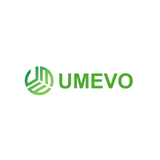The market for AI wearable recorders has saturated rapidly. You no longer just buy a "recorder"; you buy an ecosystem. This report compares four distinct devices: the Limitless Pendant (for meetings), the Bee (for lifestyle), the Omi (for developers), and the UMEVO Note Plus (for utility). Each serves a different user. This guide cuts through marketing noise to define which hardware suits your workflow.
Quick Links
1. Limitless Pendant: The Professional's Choice
The Limitless Pendant (formerly Rewind) targets the corporate workspace. It is not designed for casual chatting; it is designed to replace your notebook.

Hardware & Design
The device is a magnetic clasp or pendant. It features a "Consent Mode" to ensure privacy compliance in dual-party states. The battery lasts approximately 100 hours. It does not have a screen.
Software Ecosystem
Limitless wins on software integration. It runs in the background of your Mac or Windows PC, capturing system audio (Zoom/Teams) and syncing it with physical world recordings from the pendant. The AI identifies speakers and separates actionable items from general chatter.
Pros
- Best-in-class speaker diarization (who said what).
- Seamless sync with Zoom/Google Meet.
- 100-hour battery life.
- Professional aesthetic.
Cons
- Requires subscription for advanced AI features ($19/mo).
- No local storage (cloud dependent).
- Audio quality is optimized for speech, not broadcast.
2. Bee (Amazon): The Mass Market Logger
Bee, recently acquired by Amazon, is the budget entry. It targets the "Life Log" demographic rather than the boardroom.

Hardware & Design
Bee is a modular core that fits into a wristband (watch style) or a clip. It is the lightest of the group. However, it lacks onboard processing power. It acts primarily as a microphone array that streams data to your smartphone.
Software Ecosystem
Bee focuses on narrative. The app generates a "Daily Memory" story rather than bulleted meeting minutes. Since the Amazon acquisition, integration with Alexa is expected, potentially turning it into a physical command interface for smart homes.
Pros
- Lowest entry price (~$49).
- Flexible form factor (wrist or clip).
- Great for personal journaling and memory recall.
Cons
- Significant battery drain on the paired phone.
- Privacy concerns (Amazon data ecosystem).
- Lacks professional transcription formatting.
3. Omi: The Open Source Project
Omi (by Based Hardware) is for hackers, developers, and privacy absolutists. If you want to own your data completely, this is the only option.

Hardware & Design
The hardware feels prototypical compared to Limitless. It can be worn as a necklace or, aggressively, as a headband. It includes a battery and basic microphone array.
Software Ecosystem
Omi runs on plugins. You can install a "Friend" persona, a "Translator," or a "Sales Coach." The key selling point is the ability to self-host your data. You are not forced to use a proprietary cloud, though a managed service is available for convenience.
Pros
- Open source (Hardware and Software).
- No vendor lock-in.
- Extensible via community plugins.
Cons
- Steep learning curve.
- Hardware build quality is lower than competitors.
- Setup requires technical knowledge.
4. UMEVO Note Plus: The Utility Recorder
The UMEVO Note Plus is the pragmatic competitor. Unlike the "Wearable Assistant" vibe of the others, UMEVO positions itself as a specialized recording tool, directly competing with the Plaud NotePin.

Hardware & Design
The UMEVO Note Plus is a credit-card-thin device designed to snap onto the back of a phone via MagSafe. Its defining feature is a vibration conduction sensor (piezoelectric). This allows it to record phone calls cleanly by capturing audio through the phone chassis, bypassing software restrictions on iOS and Android.
Software Ecosystem
The UMEVO app provides transcription and summarization (GPT-4o powered). It supports dual modes: "Call Recording" (vibration) and "Standard Recording" (air conduction for meetings). It is less of a "second brain" and more of a digital file cabinet.
Pros
- Best for Phone Calls: Hardware-level call recording works where apps fail.
- MagSafe integration is convenient.
- Dual recording modes (Vibration vs. Air).
- Simple "Press to Record" physical interface.
Cons
- Not a true "wearable" (attached to phone, not person).
- App UI is utilitarian compared to Limitless.
- Subscription required for AI transcription hours.
Detailed Specs Comparison
| Feature | Limitless Pendant | Bee (Amazon) | Omi | UMEVO Note Plus |
|---|---|---|---|---|
| Primary Function | Meeting Assistant | Life Logging | Dev/Hacking | Call Recording |
| Price (Hardware) | ~$99 | ~$49 | ~$89 | ~$159 (Est.) |
| Subscription | Free / $19 Pro | ~$19/mo | Optional (Self-host) | Tiered Plans |
| Form Factor | Magnetic Clip/Pendant | Wristband/Clip | Necklace/Headband | MagSafe (Phone) |
| Battery Life | ~100 Hours | Phone Dependent | ~24 Hours | ~30 Hours (Recording) |
| Storage | Cloud Only | Cloud Only | Local/Cloud | 64GB Local |
| Best Feature | Speaker ID & Sync | Narrative Diaries | Open Source | Vibration Call Rec. |
Final Verdict: Which One to Buy?

Summary
Buy Limitless if: You are a remote worker, manager, or executive who spends hours in Zoom or face-to-face meetings. The speaker identification and desktop sync are unmatched.
Buy Bee if: You want a casual, low-cost way to remember your day. It is a "Fitbit for memories." Just be aware of the privacy trade-offs with Amazon.
Buy Omi if: You are a developer. If you want to write your own Python scripts to analyze your conversations, this is the only open platform.
Buy UMEVO Note Plus if: Your primary pain point is recording phone calls. Lawyers, journalists, and sales reps who need absolute certainty that a call is recorded (without relying on VoIP software) need this hardware solution.
References
- Limitless Official Site
- UMEVO Product Page
- Based Hardware (Omi)
- Market Research Data: Plaud NotePin vs Limitless Analysis (Internal Report, Nov 2025).







0 comments